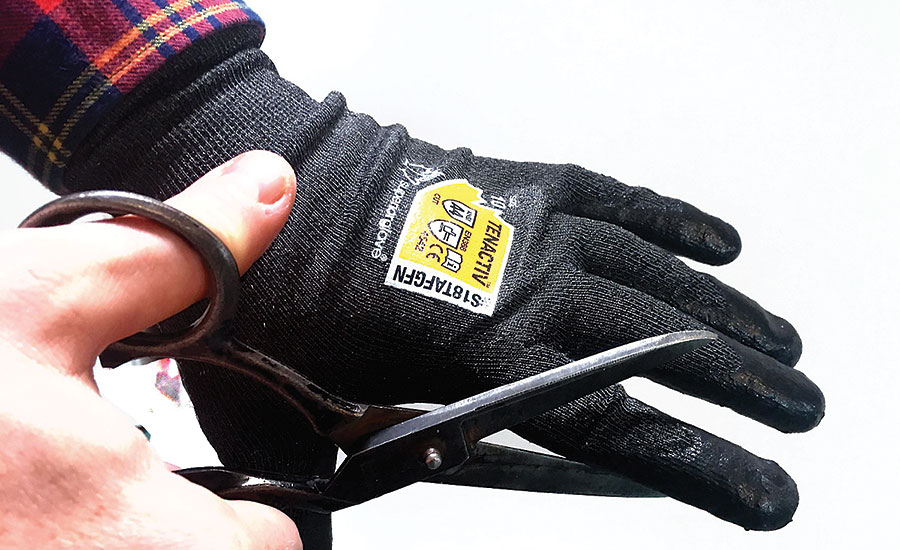To appropriately protect employees, it’s critical to find cut-resistant gloves that adhere to cut level standards. Learn how with these hand safety tips
Posted by Kathleen Rouse - Director of Research and Development, Worldwide Protective Products on 7th Jun 2019

Our hands are among our most important tools, at work or at home. Yet they’re also among the most at-risk body parts. The right gloves can help, but do you understand all the factors—such as the right standards for your industry or the importance of fit and comfort to workers?
More than a million workplace hand injuries occur each year, including lacerations and punctures. In a June 20 webinar offered by MSC, Kathleen Rouse, director of research and development at Worldwide Protective Products, and John Mazur, Worldwide’s regional sales manager, discussed cut-resistant glove features and standards.
According to the U.S. Bureau of Labor Statistics, of the more than 1 million workers that head to the emergency room each year with hand injuries, more than 70 percent weren’t wearing gloves, and 30 percent were wearing damaged, inadequate or the wrong type of glove.
Besides the cost of medical claims and workers’ compensation claims, hand injuries can also lead to a significant amount of lost work time, Mazur says.
Rouse says the changes in rating levels were driven by product innovation, with new yarn technologies changing the levels of cut protection offered by gloves. The new scores allow manufacturers and users to zero in on gloves that offer higher performance.
“Today, engineered yarns are the gold standard because of their ability to deliver higher cut-resistant levels,” says Rouse. “By engineered yarns we mean a combination of materials put together to provide more protection than any single material alone.”
Rouse says four material characteristics affect a glove’s cut resistance:
- Strength: A glove can be made stronger through the use of materials like Kevlar.
- Hardness: Materials like stainless steel add to a glove’s hardness.
- Lubricity: Some materials can increase a glove’s slipperiness, making a cutting edge slide over the surface of the glove instead of cutting it.
- Rolling action: “A sharp edge slides over the top of the yarn as if rolling across a ball bearing without cutting through the material,” Rouse says. “This also explains why knitted gloves usually do well in CR applications–the yarn loops have room to move and roll when contacted by a sharp surface.”
Gloves can be designed for one or more of the factors, depending on the anticipated use and level of cut protection needed, but no single fiber can offer every benefit.
“Glove manufacturers engineer composite yarns, made with two, three and even more individual components to deliver the benefits of strength, hardness, lubricity and rolling action,” Rouse says. “In that way, we can deliver gloves with two or even three times more cut resistance than a product made only with one component.”
Safety Gloves for Flame Resistance, Temperature, Wearability and Visibility
Besides cut resistant, gloves created with a mix of fabrics can also meet a variety of other needs, Mazur says.
“By strategically blending high-functioning fibers (like steel and fiberglass) and other traditional fibers (like cotton, polyester and spandex) we can deliver additional benefits for the glove, like abrasion, cold and heat resistance and even flame resistance,” Mazur says. “In the same design, we can improve things like fit and dexterity and things like coolness and moisture-wicking to the skin.”
Depending on the planned use, gloves may be designed with protective features such as resistance to cold, heat, flame or chemicals, impact protection, or extra protection for fingers, thumb crotch, wrists or forearms.
“High visibility is becoming more and more popular in the industry right now,” Mazur says. He says a plant where workers had to change rollers on a machine had a problem with fingers getting pinched. “The reason was one worker couldn’t see the other workers’ hands. So they asked us to develop a high-visibility glove. Now both workers can see the others’ hands when placing the rollers.”
Wearability factors–things that make a glove more comfortable–include flexibility and stretch, manual dexterity, fingertip sensitivity, breathability and more.
“If it’s not comfortable, compliance is going to be very low,” Mazur says. If your supplier can’t find a glove that fits your needs, you don’t need to settle for something that doesn’t work well for your task. Mazur says manufacturers can now design gloves to meet specific needs.
“Glove manufacturers engineer composite yarns, made with two, three and even more individual components to deliver the benefits of strength, hardness, lubricity and rolling action. In that way, we can deliver gloves with two or even three times more cut resistance than a product made only with one component.”
